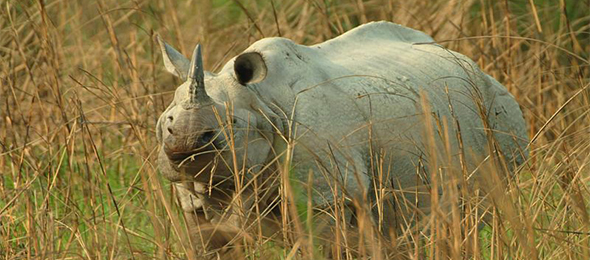

About Kaziranga National Park
In the heart of Assam, located on the banks of the mighty Brahamputra River, this park is one of the last areas in eastern India undisturbed by a human presence. It is inhabited by the world's largest population of one-horned rhinoceroses, as well as many mammals, including tigers, elephants, panthers and bears, and thousands of birds. With Open country covered mostly with elephant grass, Kaziranga gives visitors a chance to see the fauna at fairly close quarters.
Situated in Jorhat Nawgaon district, the Kaziranga National Park extends over an area of 430 sq. km. It is bounded by the Mikir Hills on the South and Bramhaputra River on the north. The park, 217 km from the capital of Assam, Guwahati was declared a Wildlife sanctuary in 1950 and accorded the status of a National Park in 1974. The park divided into central, eastern and western sectors consists of semi- evergreen-forested highlands, rivulets, marshes and extensive plains covered with tall elephant grass up to 6 metres high.


Elephant Safaris at Kaziranga National Park
Elephant Safari starts from very early morning and continues for one or 1/2 hours, Elephant safari is the best way to explore the wide varieties of wildlife in the Kaziranga National Park, area covered by the Elephant Grass can be best viewed trip through elephant's back, Elephant safari is best enjoyed in the early Morning, during safari one can get opportunity to see herds of Indian Elephants, One-horned Rhinoceros very short distance, a close encounter with the animals in Kaziranga National Park makes the trip memorable, Elephant safari covers Baguri, Hole Path, Mihimukh, Kohora Central Path and Arimarah


The Famous Indian One-Horned Rhinoceros
The Great one horned rhino is commonly found in Nepal, Bhutan, Pakistan and in Assam, India. It is confined to the tall grasslands and forests in the foothills of the Himalayas. The Indian Rhinoceros can run at speeds of up to 25 mph (40 km/h) for short periods of time and is also an excellent swimmer. It has excellent senses of hearing and smell, but relatively poor eyesight.




